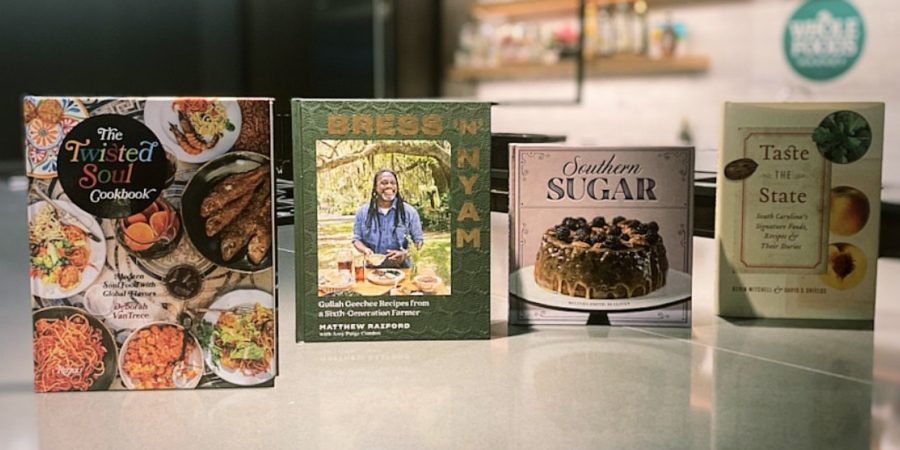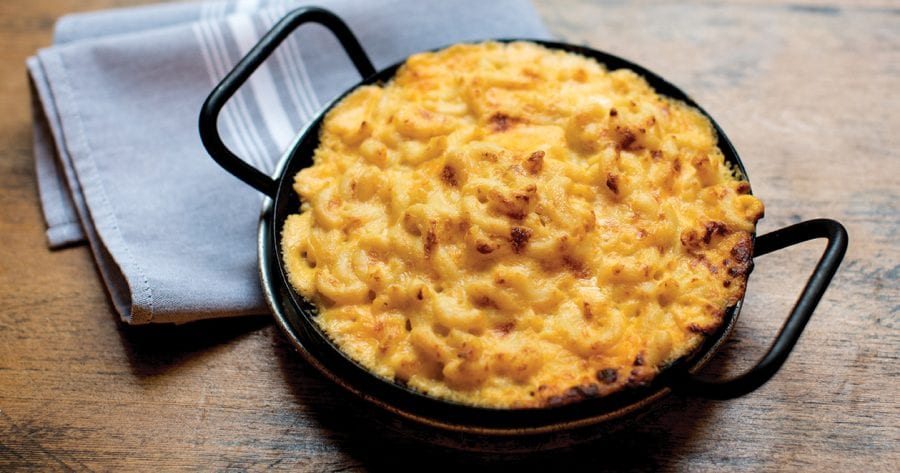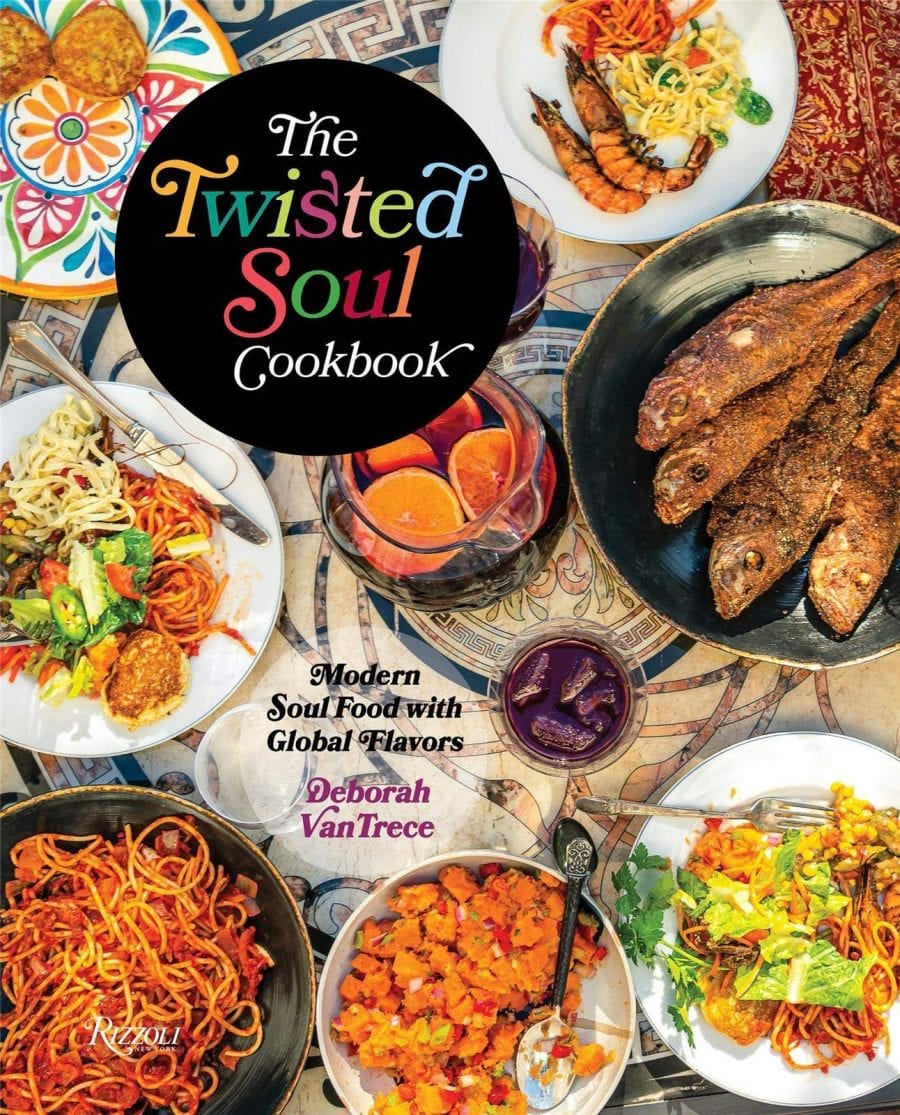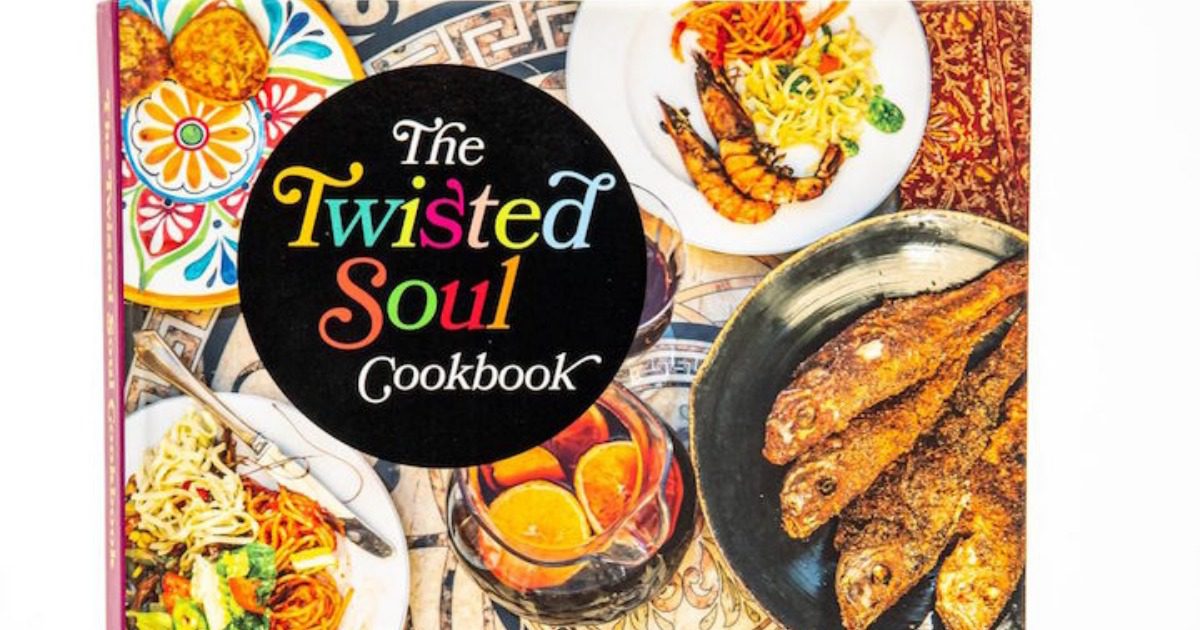The African American diaspora launched a wave of cooking traditions and styles throughout the United States that became synonymous with “Southern,” “comfort,” or “down-home” food. As descendants of enslaved people moved throughout and beyond the South, they adapted old family recipes to meet the changing ingredients and socioeconomic conditions. In the mid-20th century, the term “soul food” became broadly used to describe the style of food found in Black communities—a style reflected in many food traditions found in the South.
The 2021 Gather ‘Round event in Atlanta invited a panel of chefs and recent cookbook authors to discuss their thoughts on soul food and its influences on their cooking. Panelists included chef Deborah VanTrece, owner of Twisted Soul Cookhouse & Pours in Atlanta, culinary mentor, and author of the Twisted Soul Cookbook, published in March 2021. The restaurant menu and book reflect her soul food-goes-global style, and she passionately believes that any food that comforts and conveys a sense of love defines a culture’s soul food.

SOUL FOOD DEFINED BY DEBORAH VANTRECE
The Local Palate: How has your perception of ‘soul food’ evolved over time?
Deborah VanTrece: Originally my perception of soul food was very narrow. I’m from Kansas City, so the food I knew was what I grew up with, and it was considered soul food. I didn’t even really know why it was considered soul food then, it was just good!
As I traveled, I saw the relationship more of soul food in the South, and as I traveled internationally, I started seeing those foods in other cultures. For me, there’s a version of soul food as traditional African-American cuisine, and there’s a broader scope that says soul food is food that comes from the soul.
TLP: What memories do you have associated with the foods or meals you grew up with? Does it align with what you think of soul food today?

DVT: The food I grew up with would be considered traditional soul food. My food today is just a story of my life. I’ve gone from eating in restaurants to eating in people’s homes. And you think about the people who welcome you into their home. By doing that they’re showing their nakedness in terms of food. They’re showing you what they threw together on a Tuesday, for their family, and when they welcome you to sit down and have a plate, it doesn’t get any rawer than that. Those are the meals that I celebrate.

TLP: You grew up cooking, and your mother let you take responsibility for cooking and grocery shopping at a young age. What got you back into cooking after your career as a flight attendant?
DVT: I never stopped cooking. I had every food magazine there was, but there were no people who looked like me [in them]. But by traveling, I started seeing what was out there, and I started relating it to the foods I knew and made. Mornay, for example, is just a cheese sauce for macaroni. Pumpkin pie is sweet potato pie. I was able to embrace so much by seeing foods that way.
What you do is keep creating on top of that. You have people in Italy eating polenta, but then there are people here who won’t touch it, but they eat grits. If we introduce more people to all of the foodways we share between our cultures, it opens up another place for us to co-exist

TLP: What elements of other nations’ cuisines did you fall in love with? Did you discover any culinary traditions that resonated with your notions of soul food?
DVT: I grew up with foods like oxtails and neck bones and chitlins, and it was food that was looked down upon, because those were the foods that defined soul food. Then I started traveling, and one thing I noticed first was going to France and seeing chitlins in the form of sausage. French cuisine, which we put on the pedestal, includes these foods that were considered the bottom of the barrel growing up. It became bigger than the small amount of food that was encased in the realm of African American soul food. These foods came from people who didn’t really have a lot, and they found ways to take what was available and make something beautiful and good.
We are in a space now where we’re talking about sustainability—the rooter to the tooter—but then you realize that most people don’t even know how to use the whole animal. But there are people who have been doing it for umpteen years, and that’s where the inspiration comes from. People who had nothing learned how to take cheaper cuts and make it taste good. Those are important stories to tell.
share
trending content
-
New Restaurants in Arkansas
-
Shrimp and Grits: A History
by Erin Byers Murray -
Tea Cakes, A Brief History
by TLP Editors -
Gullah Geechee Home Cooking
by Erin Byers Murray -
A Cajun Christmas Menu
by TLP Editors
More From At the Table
-
High Tea, Southern Style
-
10 Leftover Recipes To Clean Out Your Fridge
-
Country Captain Shrimp and Grits
-
10 Nonalcoholic Drinks for Dry January
-
Our Most Popular Recipes of 2023





